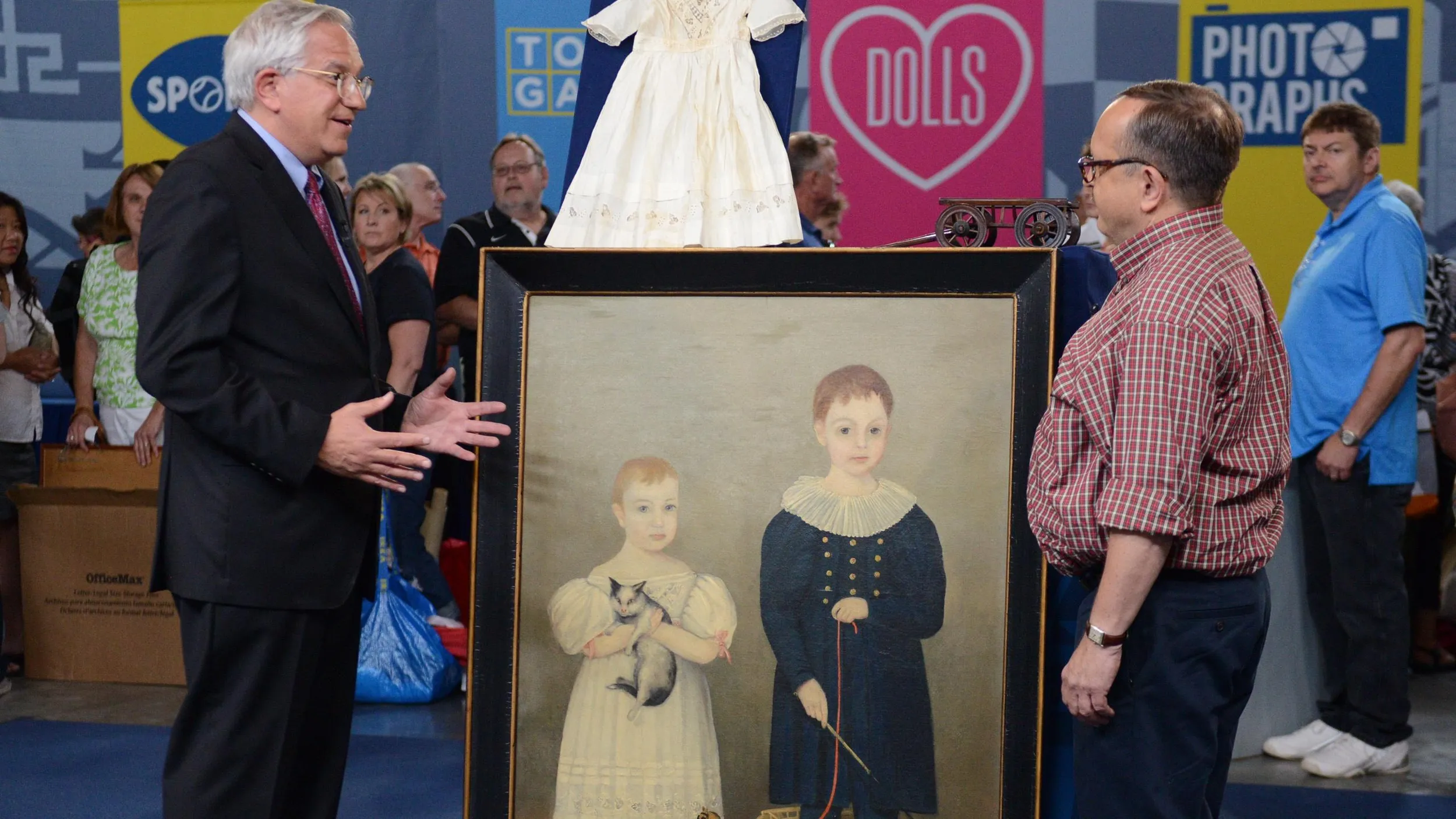GUEST: These are my husband's and my father-in-law's kidney belts for when they rode a rigid. Now everything's a soft tail, so… you really don't need these, but they're still cool. This is my father-in-law here—
APPRAISER: Right here.
GUEST: --and he rode his Indian to work every day until he retired, and they would laugh when he would come into work in the snow. But he did. He rode an Indian, and this is his belt here. My husband rides Harley-Davidsons, and this was his belt when he was in his cool stage.
(both laughing)
APPRAISER: You're always in your cool stage when you're riding a Harley.
GUEST: And now - and this was a hat that he wore, only he wore it backwards.
APPRAISER: And you?
GUEST: I rode with my husband, I used to ride, and then a friend of ours got injured and it kind of scared me, so I ride with my husband.
APPRAISER: But you're still on the back?
GUEST: Yes, I am.
APPRAISER: And you don't need these.
GUEST: No, no.
APPRAISER: Well, that's a good reason why.
GUEST: Although the older we get, we might go back to them. (laughing)
APPRAISER: People don't know a lot about kidney belts. You see belts on people in stores when they're moving stuff today, but kidney belts were one of the first items that were actually made for motorcycle riders and were used by motorcycle riders because think about it: back in the 1920s, you're not riding these beautiful highways like you are today; you're riding these choppy roads with ruts, and you didn't have suspension and shocks like you have today.
GUEST: Right.
APPRAISER: These belts were made to protect your kidneys.
GUEST: Absolutely.
APPRAISER: They were made originally just like leather jackets, to protect you, but they've become fashionable. Starting in the 1920s, they were produced by several different companies. Motorcycle riders are a breed unto their own, right?
GUEST: Yes.
APPRAISER: So, you could create your own belt with certain studs. Buco was a big company that made belts. That's Buco right here, they are out of Detroit. And you could buy standard or you could have them personalized. You could put your initials, you could put conch shells on there. You could do sequins, whatever you wanted to do.
GUEST: Mm-hmm.
APPRAISER: Your father-in-law's is even cooler, because riding an Indian, what else would he have? You wanted to be the chief. These belts were probably made circa 1940s, maybe 1950s. These started getting phased out in the '50s and '60s. Roads got better, motorcycle shock absorption and suspension got better, and by the '70s and '80s, they were pretty well phased out. You only see them in motocross riders today.
GUEST: Right, mm-hmm.
APPRAISER: The Buco belts sell generally, depending on what the design is on them, anywhere between $300 and $400. Really ornate ones or unusual can sell for as high as maybe $1,000. This, because it's so unusual, would sell for a little bit more with the chief on there, $500 to $700.
GUEST: Wow!
APPRAISER: And the hats are great. The hats have been made by Harley for years, and those are going to sell, depending on condition, between $200 and $500.
GUEST: Wow!
APPRAISER: So if this were to sell at auction, I would say it would sell somewhere between $1,000 and $1,600.
GUEST: Wonderful!
APPRAISER: And you know what they say: accessories make the outfit.
GUEST: They do, absolutely!



